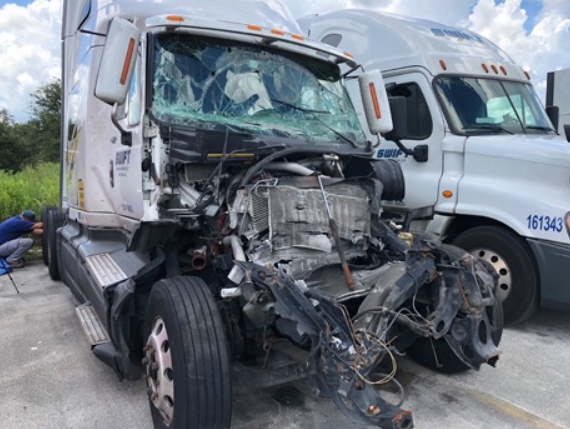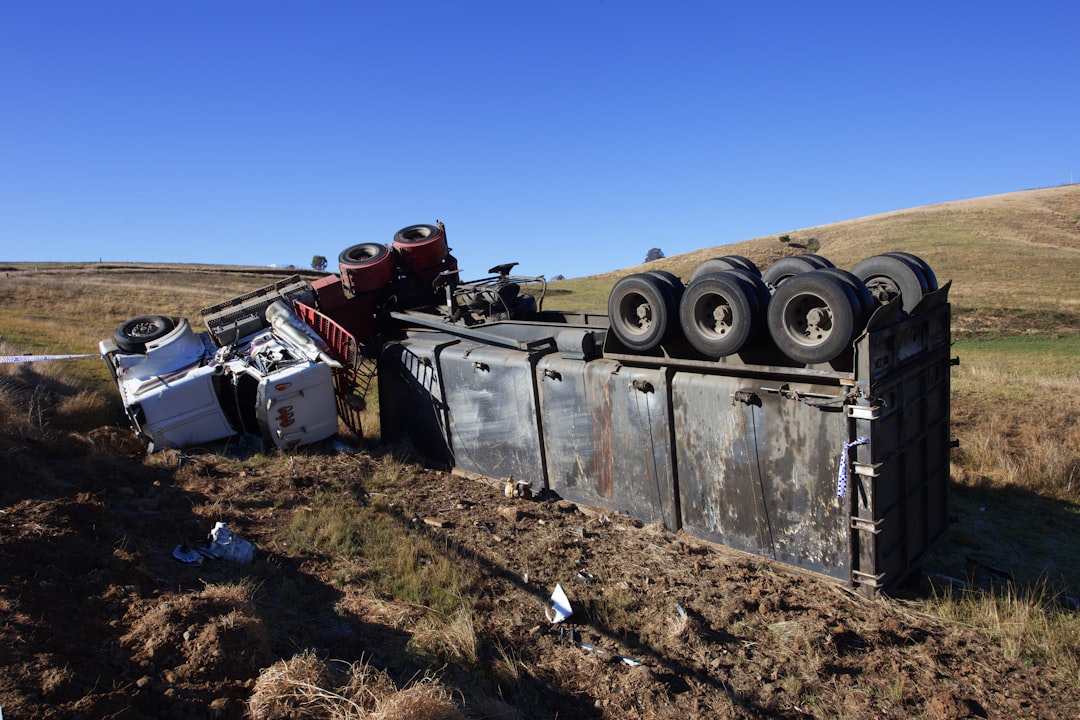

Radiology is an indispensable part of modern medical diagnostics, enabling healthcare providers to visualize the internal structures of patients' bodies and diagnose various conditions accurately. However, despite its critical role, radiology is not infallible. Errors in radiology can have severe consequences for patients, leading to misdiagnoses, delayed treatments, or unnecessary procedures. In the context of medical malpractice lawsuits involving radiology errors, understanding common types of such errors is crucial.
One prevalent type of error in radiology is the misinterpretation of images. Radiologists are tasked with examining complex images from X-rays, CT scans, MRIs, and ultrasounds to identify abnormalities. Misinterpretation can occur due to a variety of reasons: fatigue, cognitive overload, or simply human error. For instance, a small lesion on a lung might be overlooked or mistaken for a benign condition when it is actually malignant. This kind of mistake can delay critical treatment for cancer patients and significantly impact their prognosis.
Another frequent issue arises from communication breakdowns between radiologists and other healthcare providers. Effective communication is essential for ensuring that the findings from imaging studies are conveyed accurately and timely to the treating physicians. A failure in this chain-whether it's due to incomplete reporting or delays in delivering reports-can result in important information being missed or misunderstood. For example, if a radiologist notes suspicious findings but fails to communicate these effectively to the attending physician, necessary follow-up actions may not be taken.
Technical errors also contribute significantly to radiological mistakes. These include issues like improper calibration of imaging equipment or incorrect positioning of patients during scans. Such technical lapses can lead to poor-quality images that are difficult to interpret correctly or even entirely unusable for diagnostic purposes. Furthermore, software glitches or failures in Picture Archiving and Communication Systems (PACS) can result in loss or corruption of vital imaging data.
Human factors extend beyond mere misinterpretation; they encompass inadequate training and insufficient experience as well. medical malpractice lawyer Washington . medical malpractice lawyer Washington . In some cases, less experienced radiologists might miss subtle signs that more seasoned professionals would catch easily. Additionally, continuous professional development is crucial in a field where technology and methodologies evolve rapidly; staying abreast with the latest advancements can make all the difference between an accurate diagnosis and an erroneous one.
In light of these potential pitfalls within radiology practice, medical malpractice lawsuits often hinge on demonstrating how such errors deviated from accepted standards of care and directly harmed patients. Lawyers specializing in this domain must meticulously analyze patient records and consult with expert witnesses who can provide insights into how standard protocols were breached.
It's clear that while radiology plays a vital role in contemporary medicine by facilitating early detection and treatment planning for numerous conditions, it also presents unique risks inherent to its complexity. Awareness about common types of radiology errors not only helps legal professionals build stronger cases but also underscores the importance of continuous improvements within this critical medical specialty.
Radiology malpractice cases present a unique and complex intersection of medicine and law. In these instances, the legal standards and burden of proof play pivotal roles in determining whether a healthcare provider is liable for medical negligence. Understanding these concepts is crucial for lawyers who specialize in medical malpractice lawsuits involving radiology errors.
Legal standards refer to the criteria that must be met for a case to be considered valid in the eyes of the court. In radiology malpractice cases, as with other types of medical malpractice, the plaintiff must establish four key elements: duty, breach, causation, and damages. First, it must be shown that the radiologist owed a duty of care to the patient. This duty arises from the professional relationship between the healthcare provider and the patient.
Next, there must be evidence that this duty was breached. This is often established by demonstrating that the radiologist's actions deviated from what would be expected of a reasonably competent professional under similar circumstances. Expert testimony is typically required to elucidate what constitutes standard care in radiology and how this particular case deviated from it.
Causation is another critical element. The plaintiff must demonstrate that the breach of duty directly caused harm to the patient. This can be particularly challenging in radiology cases because many factors may contribute to a patient's condition or outcome. For example, if an error in interpreting an X-ray led to a delayed diagnosis, it must be proven that this delay directly resulted in additional harm or worsened prognosis.
Finally, damages must be clearly defined and quantifiable. The plaintiff needs to show tangible harm resulting from the alleged negligence-whether physical injury, emotional distress, economic loss, or a combination thereof.
The burden of proof lies with the plaintiff throughout these proceedings; they must convince the court that their claims are more likely true than not - meeting what is known as "the preponderance of evidence" standard. Unlike criminal cases where guilt must be proven "beyond a reasonable doubt," civil cases such as medical malpractice require only that it is more probable than not that malpractice occurred.
For attorneys handling these intricate issues within radiology malpractice lawsuits, possessing deep knowledge about both legal principles and medical practices is essential. They need to collaborate closely with medical experts who can provide credible testimony regarding deviations from standard care and articulate how those deviations caused measurable damage.
Navigating through legal standards and meeting burdensome proofs requires painstaking attention to detail coupled with robust advocacy skills. A proficient lawyer will meticulously gather all pertinent records - imaging studies themselves (such as MRIs or CT scans), reports generated by radiologists at different stages - alongside comprehensive accounts detailing patient histories preceding alleged negligent acts up until current states post-incident.
Moreover, experienced attorneys understand nuances around statutes governing limitations on filing suits which vary across jurisdictions-another critical aspect ensuring timely pursuit without falling afoul procedural pitfalls barring otherwise legitimate claims due lapses statutory deadlines.
In conclusion expert handling involves harmonizing legal acumen alongside substantive grasp intricacies inherent field diagnostics - exemplified by Radiological assessments performed daily basis safeguarding public health whilst minimizing adverse outcomes ensuring justice achieved when deviations occur impacting lives irrevocably thus underscoring paramount importance skilled representation navigating labyrinths entwined complexities therein encapsulated safeguarding equitable redressal aggrieved patients seeking accountability responsible parties ensuring societal trust maintained healthcare systems integral role therein fostering holistic wellbeing community large.
Finding the best medical malpractice lawyer near you can be a daunting task, but it’s an essential one if you seek justice and fair compensation for any harm you've suffered.. The process involves several crucial steps: conducting thorough research, consulting with multiple professionals, and ultimately trusting your instincts. First and foremost, start with comprehensive research.

Posted by on 2024-09-17
When you're confronted with the intricacies of a medical malpractice case, securing qualified legal representation is essential to navigating the complex legal landscape effectively.. Medical malpractice is an area of law that demands specialized knowledge and experience due to its nuanced nature.

Posted by on 2024-09-17
When considering the cost of hiring a medical malpractice lawyer, it's crucial to understand the different payment models that attorneys may use.. Each model has its own set of advantages and disadvantages, and choosing the right one can significantly impact both your finances and the outcome of your case. One common payment model is the Contingency Fee arrangement.

Posted by on 2024-09-17
When faced with the unsettling suspicion of medical malpractice, it’s natural to be overwhelmed by a swirl of emotions and questions.. One of the most pressing concerns is what steps to take next: should you consider settlement options or prepare to go to trial?

Posted by on 2024-09-17
Navigating the complex landscape of medical malpractice can be daunting, especially if you're considering going it alone without the aid of a lawyer.. The good news is that there are numerous resources available to help you represent yourself effectively in these cases.

Posted by on 2024-09-17
Identifying and Gathering Evidence for Radiology Error Claims
In the realm of medical malpractice, radiology errors represent a significant category where the stakes are invariably high. These errors can lead to severe consequences, including misdiagnosis, delayed treatment, or even unnecessary surgeries. As an attorney specializing in medical malpractice lawsuits involving radiology errors, the meticulous process of identifying and gathering evidence is paramount to building a strong case.
The first step in this journey involves recognizing what constitutes a radiology error. Radiologists play a critical role in diagnosing illnesses through imaging techniques such as X-rays, MRIs, and CT scans. An error could be anything from misinterpreting images, failing to recognize abnormalities, or even technical mistakes in producing clear images. The complexity of these cases necessitates a nuanced understanding of both medical practices and legal standards.
Once an error is identified, gathering evidence becomes the cornerstone of substantiating the claim. This begins with obtaining all relevant medical records. Comprehensive records provide a timeline and context for the alleged error, detailing everything from initial consultations to follow-up treatments. A thorough review of these documents often reveals inconsistencies or lapses in standard care protocols that may not be immediately apparent.
Next comes consulting with expert witnesses-typically seasoned radiologists who can scrutinize the imaging studies involved in the case. These experts play a dual role: they help validate that an error occurred and establish that it deviated from accepted medical standards. Their testimony can be pivotal in demonstrating how a reasonable radiologist would have acted differently under similar circumstances.
Equally important is collecting testimonies from other healthcare professionals who were involved in the patient's care. Nurses, technicians, and primary care physicians can provide valuable insights into how the radiological findings influenced subsequent medical decisions. Their accounts can corroborate whether there was indeed an actionable lapse that led to harm.
Digital evidence also holds significant weight in modern malpractice claims involving radiology errors. Imaging studies are often stored electronically within hospital systems under stringent security measures. Ensuring access to unaltered digital files is crucial for authenticity and integrity in court proceedings.
Moreover, documenting the patient's experience plays an integral role in illustrating the real-world impact of the radiology error. Statements from patients and their families about physical suffering, emotional distress, or financial burdens add a layer of humanization to what might otherwise seem like abstract technicalities.
Finally, assembling this mosaic of evidence requires careful attention to procedural rules governing admissibility and relevance in courtrooms. Every piece of documentation must align with legal standards while also painting a compelling narrative that resonates with judges or jurors.
In conclusion, handling medical malpractice lawsuits involving radiology errors demands a comprehensive approach rooted in meticulous identification and collection of evidence. Each piece-from expert testimonies to patient experiences-must coalesce into a coherent argument that clearly demonstrates negligence leading to harm. For attorneys dedicated to seeking justice for affected individuals, mastering this intricate process is not just professional duty but also a moral imperative.

The Role of Expert Witnesses in Radiology Malpractice Lawsuits
In the intricate realm of medical malpractice lawsuits, radiology errors occupy a significant niche. These errors can lead to severe consequences for patients, ranging from misdiagnosis to delayed treatment, and sometimes even death. When such unfortunate incidents occur, the involvement of expert witnesses becomes pivotal in navigating the complex legal landscape.
Radiologists interpret medical images-X-rays, MRIs, CT scans-that are often critical for diagnosing a myriad of health conditions. Any lapse in judgment or oversight can set off a chain reaction with dire repercussions. Lawyers specializing in medical malpractice lawsuits involving radiology errors often rely on expert witnesses to elucidate the subtleties and technical aspects of these cases.
Expert witnesses in radiology malpractice lawsuits are typically seasoned professionals with extensive experience and specialized knowledge in the field of radiology. Their role is twofold: they must provide an objective analysis of the case at hand and articulate their findings in a manner that is comprehensible to judges and juries who may lack medical expertise.
One primary task for these experts is to determine whether the standard of care was breached. The standard of care refers to what a reasonably competent radiologist would have done under similar circumstances. By examining medical records, imaging studies, and other pertinent documents, expert witnesses assess whether the accused radiologist deviated from accepted practices.
Furthermore, expert witnesses must establish causation-connecting the alleged error directly to the harm suffered by the patient. This step is crucial because proving negligence alone is insufficient; it must be shown that this negligence caused specific injury or damage.
The testimony provided by these experts can be instrumental during both pre-trial negotiations and court proceedings. In many instances, their opinions may influence settlements out of court as parties seek to avoid lengthy trials. However, if a case does proceed to trial, an expert witness's ability to convey complex medical information clearly and authoritatively can significantly impact jury decisions.
For lawyers representing plaintiffs (the injured parties), finding credible and articulate expert witnesses can strengthen their case enormously. Conversely, defense attorneys also turn to expert witnesses who might argue that no breach occurred or that any alleged error did not cause harm.
Beyond courtrooms, expert witnesses play an educational role too. They help all parties involved understand intricate details about diagnostic processes and potential pitfalls within radiology practice. This broader understanding not only aids current litigation but also contributes towards preventing future errors by highlighting areas where systemic improvements might be necessary.
In conclusion, expert witnesses are indispensable in radiology malpractice lawsuits due to their deep understanding of medical imaging nuances combined with their ability to communicate effectively within legal contexts. Their insights bridge gaps between highly technical medical knowledge and legal standards required for justice delivery. As such cases continue evolving alongside advancements in diagnostic technology, so too will the critical role played by these experts within our judicial system.
When considering the realm of medical malpractice lawsuits, particularly those involving radiology errors, it becomes imperative to understand the potential damages and compensation available for victims. Radiology errors can have severe consequences, leading to delayed diagnoses, incorrect treatments, or even unnecessary surgeries. As a result, victims may face significant physical suffering, emotional distress, and financial burdens. The role of a lawyer in these cases is crucial in navigating the complexities of medical malpractice law and ensuring that victims receive fair compensation for their losses.
One of the primary forms of compensation sought in medical malpractice cases is economic damages. These damages are intended to cover quantifiable financial losses incurred by the victim due to the radiological error. Economic damages typically include medical expenses such as costs for additional treatments, surgeries, hospital stays, medications, and rehabilitation services. Moreover, if the victim's ability to work has been compromised due to the error, they may be entitled to compensation for lost wages and future earning capacity.
In addition to economic damages, non-economic damages are also a critical component of compensation in medical malpractice lawsuits. These damages address more subjective aspects of harm that are not easily quantified but nonetheless profoundly impact the victim's quality of life. Non-economic damages may include pain and suffering endured due to incorrect or delayed treatment, emotional distress stemming from anxiety or depression related to the misdiagnosis or mistreatment, and loss of enjoyment of life if the victim's ability to engage in everyday activities has been diminished.
Punitive damages are another potential form of compensation but are less common in medical malpractice cases compared to other types of civil litigation. Punitive damages aim to punish particularly egregious behavior by healthcare providers and deter similar conduct in the future. In cases where radiology errors resulted from gross negligence or intentional misconduct-such as falsifying records or deliberately ignoring standard procedures-punitive damages might be awarded.
The process of securing these various forms of compensation can be complex and requires a thorough understanding of both medicine and law. Lawyers specializing in medical malpractice must adeptly gather evidence showing how radiological errors directly caused harm. This often involves consulting with expert witnesses who can testify about standard practices within radiology and demonstrate how deviations from these standards led directly to patient injuries.
Moreover, lawyers play a pivotal role in negotiating settlements with insurance companies that represent healthcare providers or hospitals involved in the case. Insurance companies frequently attempt to minimize payouts by disputing claims or downplaying the extent of harm suffered by victims. A skilled attorney will advocate on behalf of their client vigorously ensuring that all aspects-including future needs like long-term care or ongoing therapy-are considered when calculating fair compensation.
In conclusion, potential damages and compensation for victims involved in radiology error-related medical malpractice lawsuits encompass both economic losses like additional medical costs and lost income as well as non-economic harms such as pain and suffering. While punitive damages may also come into play under certain circumstances involving gross negligence or willful misconduct by healthcare professionals responsible for interpreting diagnostic images accurately; achieving justice demands knowledgeable legal representation proficient at both proving liability through compelling evidence backed up by expert testimony while also effectively negotiating equitable settlements with insurers intent on minimizing financial exposure vis-a-vis such claims against them filed successfully via competent counsel representing aggrieved patients thus wronged inadvertently yet grievously so deserving full recompense thereby achieved ultimately through diligent advocacy undertaken relentlessly until rightful redress attained satisfactorily beyond reproach henceforth affirmed judicially accordingly thereto thereafter conclusively upheld henceforward perpetually so deemed justly warranted thereby fulfilled equitably overall therein stated hereby enunciated expressly forthwith
If you suspect a radiology error has occurred, it is important to take immediate and thoughtful steps to address the situation. Radiology errors can have serious consequences, potentially leading to misdiagnosis, delayed treatment, or unnecessary procedures. Here's a comprehensive guide on what actions you should consider if you find yourself in this unfortunate situation.
The first step is always to gather information. Take note of all relevant details pertaining to the suspected error. This includes dates, times, names of medical professionals involved, and any specific observations that lead you to believe an error has occurred. Accurate documentation will be invaluable if the issue escalates into a legal matter.
Next, seek a second opinion from another qualified healthcare provider. Radiology is a specialized field, and sometimes interpretations can vary slightly between professionals. However, if your concerns persist after obtaining another opinion, it strengthens your case for a suspected error.
Communication with your healthcare provider is crucial at this stage. Contacting your doctor or the radiologist who conducted the examination can sometimes clarify misunderstandings or offer insights into why certain decisions were made. Approach this conversation with an open mind but remain vigilant about inconsistencies or explanations that do not adequately address your concerns.
If these initial steps do not resolve the issue or confirm your suspicions of an error, it may be time to consult with a lawyer who specializes in medical malpractice lawsuits involving radiology errors. An experienced attorney can provide valuable guidance on whether you have grounds for a lawsuit and what evidence will be required to build a strong case.
Your lawyer will likely advise you to obtain copies of all medical records related to the incident. These records are essential for demonstrating how the error occurred and its impact on your health. Additionally, they serve as critical evidence in any legal proceedings.
Consider filing a formal complaint with the hospital or medical facility where the radiology service was performed. Most institutions have procedures for investigating such complaints internally and may offer resolutions without needing to go through court processes.
Time is of the essence in these situations due to statutes of limitations that govern how long you have to file a malpractice claim. Your lawyer will help ensure that all legal deadlines are met so that your case remains valid.
Lastly, focus on taking care of your health throughout this process. Dealing with potential medical errors can be stressful and emotionally draining; prioritize getting appropriate medical treatment for any conditions affected by the radiology error while pursuing justice through legal means.
In conclusion, suspecting a radiology error requires prompt action: gathering information, consulting other healthcare providers for second opinions, communicating openly with involved parties, seeking legal counsel specializing in medical malpractice involving radiology errors, obtaining necessary documentation, considering internal complaints within healthcare institutions, adhering to legal timelines, and prioritizing personal health care needs during this challenging period.
Best lawyer for medical malpractice involving delayed treatment